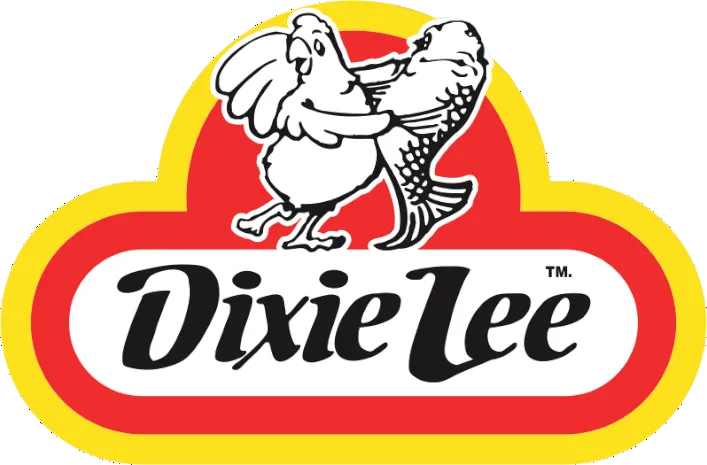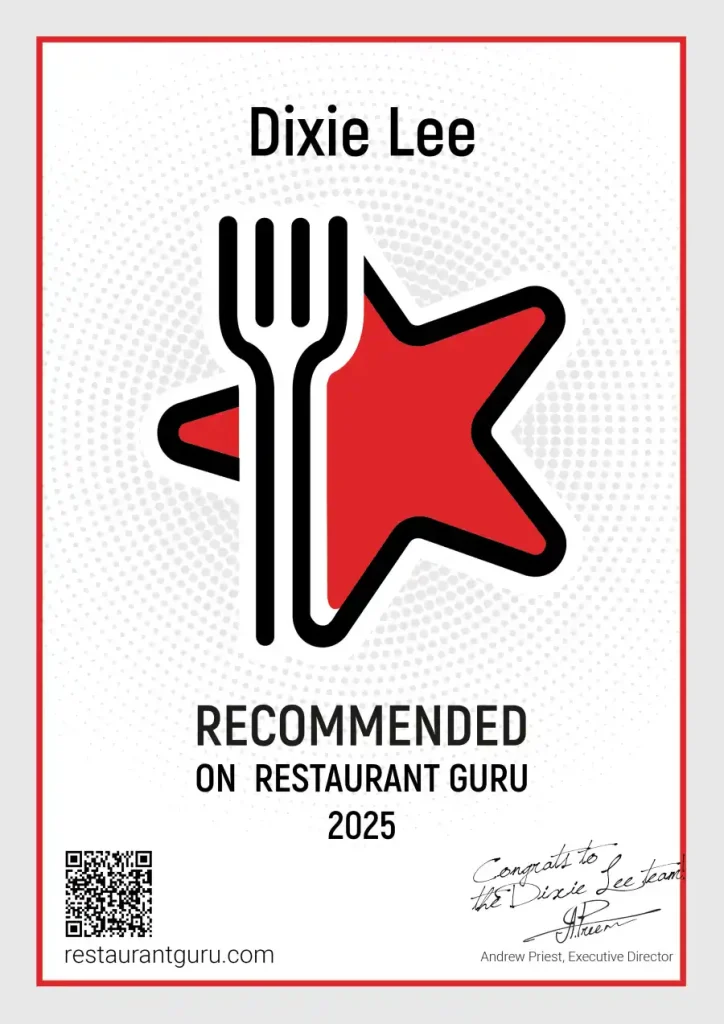To succeed with Dixie Lee in Ogdensburg, choose a high-visibility, drive-thru-friendly site near anchors such as the hospital, schools, grocery stores, and gas stations. A location that captures local families, commuters, travelers, and anglers will increase footfall and drive incremental sales.
Operations should prioritize speed, consistency, and quality: maintain crisp procedures, fast service, and value bundles that match local preferences. Staff training should follow brand standards and be reinforced with weekly audits and routine equipment calibration—particularly fryers—to ensure food quality and safety.
Use a simple loyalty program to encourage repeat visits, and pursue partnerships with nearby employers and community organizations to build regular catering and after-hours business. Host community nights and participate in local events to strengthen the restaurant’s presence.
Track key performance indicators daily—sales, average ticket, labor hours, food cost, and speed of service—and manage food and labor tightly to protect margins. Celebrate team wins to sustain morale and reduce turnover.
Follow the proven playbook of site selection, disciplined operations, targeted local marketing, and rigorous financial controls to build a successful Dixie Lee franchise in Ogdensburg.
Key Takeaways
- Choose a high-visibility corner or corridor site near anchors; design a fast, intuitive drive‑thru with clean entry/exit and clear signage.
- Target locals, hospital/school staff, travelers, and anglers; tailor bundles, hours, and pricing to commuter peaks, tourism swings, and Canadian currency sensitivity.
- Execute flawless operations: strict fry timing/rotation, calibrated equipment, LMS training, rush-speed drills, and weekly audits with documented fixes.
- Build a service-first team: hire for warmth, cross-train, greet fast, resolve issues immediately, and track wait times, accuracy, and speed-of-service.
- Systemize marketing and finances: simple loyalty, employer partnerships, monthly offers, KPI dashboards, inventory controls, and vendor negotiations to protect unit economics.
Assessing the Ogdensburg Market and Customer Demand
Before you sign a franchise agreement, ground your plan in Ogdensburg’s realities: size up the city’s population, commuter flows across the Canadian border, and seasonal tourism on the St. Lawrence. Define your target segments—local families, hospital and school staff, travelers, and anglers—and estimate their weekly meal occasions. Use public data to map age, income, and household size. Check competitor menus, price points, peak hours, and drive‑thru speeds. Survey residents about fried chicken preferences, sides, and value bundles; ask Canadians about currency sensitivity and wait‑time tolerance. Analyze grocery and fuel prices to gauge value perceptions. Forecast demand by daypart and season, then test with pop‑ups or limited menus. You’ll validate Dixie Lee’s fit, pricing, and throughput needs before committing.
Selecting a High-Visibility, High-Traffic Location
You should target corner and corridor sites that maximize exposure and easy turns. Prioritize proximity to anchors—grocery stores, big-box retailers, schools, and gas stations—to capture built-in foot and car traffic. Design drive-thru access and flow for quick entry, intuitive queuing, and clean exits to prevent bottlenecks.
Corner and Corridor Sites
Few decisions shape a fast-food franchise’s revenue like choosing a corner or corridor site—high-visibility, high-traffic locations that convert drive-by attention into steady transactions. In Ogdensburg, you’re aiming for daily flow and easy access. Corner sites put you at the intersection of two streams of motorists and pedestrians, guaranteeing sightlines from multiple angles. Prioritize clear signage, an uncluttered facade, and lighting that pops at dusk.
Corridor sites along busy arterials work when vehicles move steadily and you’ve got simple right-in/right-out turns. Confirm speed limits, lane counts, and signal timing; slower, congested stretches often lift conversion. Design your curb cuts to prevent awkward left turns and back-ups. Ascertain stacking for the drive-thru, safe pedestrian paths, and enough frontage so passing drivers recognize Dixie Lee instantly.
Proximity to Anchors
Where do hungry customers already congregate? You’ll win by placing your Dixie Lee near trusted “anchors” that pull steady traffic all day. In Ogdensburg, think supermarkets, big-box retailers, gyms, hospitals, schools, and riverfront attractions. These destinations prime people to grab quick meals before or after errands and events. Validate each anchor’s draw with simple counts: parking turnover, cart returns, class changeovers, and shift changes. Confirm easy sightlines from main roads, shared monument signage, and safe pedestrian paths.
| Anchor Type | What You Validate |
| Supermarket | Peak hours, basket size, exit flow |
| Big-Box Retail | Weekend surges, returns desk traffic |
| Hospital/Clinic | Shift changes, visitor patterns |
| School/College | Class breaks, evening events |
| Fitness Center | Early morning/after-work spikes |
Choose anchors that complement your price point and speed.
Drive-Thru Access Flow
Nothing kills a great menu faster than a clogged drive-thru. When you scout sites in Ogdensburg for Dixie Lee, prioritize smooth ingress and egress. You want two clear entry points, a wide, well-marked lane, and a stack length that holds 12–14 cars without spilling onto the street. Favor right-in/right-out access near signals or roundabouts that naturally meter traffic. If a median blocks turns, confirm a nearby U-turn or cross-access easement.
Design for speed and safety. Separate the drive-thru lane from parking and pickup traffic. Place menu boards early with preview panels, dual-lane ordering if volumes warrant, and a bypass lane for stalled orders. Confirm winter plow paths, lighting, and signage visibility. Validate the flow with peak-hour counts and a timed test drive.
Mastering Dixie Lee’s Operations and Training Systems
How do you turn Dixie Lee’s proven playbook into daily excellence? Start by commanding the standard operating procedures: prep lists, cook times, holding standards, and cleaning cycles. Follow the fryers’ timing matrix and product rotation rules without exceptions. Calibrate equipment on schedule—oil quality, thermometer accuracy, hood filters—so food quality stays consistent.
Use Dixie Lee’s Learning Management System to onboard yourself first. Complete each module, then practice on the line until you can execute at rush speed. Run daily open-and-close checklists, verify waste logs, and track variances against targets. Schedule micro-drills: breading cadence, pack-out accuracy, and order assembly. Audit yourself weekly with mystery-basket simulations and video review. When gaps appear, retrain immediately. Document fixes, update station cards, and lock in the improved method.
Building a Winning Team and Service Culture
Operational competence sets the floor; your people raise the ceiling. Hire for attitude first, skill second. Screen for reliability, coachability, and warmth. Use structured interviews and short working auditions to confirm fit. Onboard with clear checklists that translate Dixie Lee standards into simple, repeatable steps.
Set expectations early: greet fast, listen fully, resolve issues on the spot, and close the loop. Model the behavior you expect on every shift. Give micro-coaching in the moment—specific, kind, actionable. Recognize wins publicly and correct privately.
Build bench strength. Cross-train to reduce bottlenecks and keep the line moving. Post transparent schedules and honor swaps. Track key service metrics—ticket times, order accuracy, guest feedback—and review them daily with the team. Celebrate progress, reset gaps, and keep standards non-negotiable.
Marketing Locally to Drive Repeat Visits and Community Buzz
A smart local marketing plan turns first-time diners into loyal regulars and vocal fans. Focus on Ogdensburg habits: school games, riverfront events, and lunch rush patterns. Offer a simple loyalty program, limited-time local flavors, and clear calls to action. Partner with nearby employers for meal bundles, and sponsor youth teams to keep your name in weekly conversations. Track which offers bring guests back and double down.
- Host “Neighborhood Night” with a giveback to a local cause.
- Collect emails at the counter; send a two-offer monthly newsletter.
- Encourage photo posts with a unique hashtag; reshare customer content.
- Use geo-targeted ads within a 5–7 mile radius.
| Tactic | Quick Action |
| Loyalty punch | 6th meal free |
| Event tie-in | Game-day combo |
| Local collab | Coffee shop dessert |
| Social proof | Customer spotlight |
| Community giveback | Fundraiser night |
Managing Costs, KPIs, and Scalability for Long-Term Growth
You need a clear cost control [structure] that standardizes inventory, labor, and vendor spend without slowing service. Set a KPI tracking cadence—daily for ops metrics, weekly for margin health, monthly for unit economics—and act fast on variances. Build a scalable operations playbook so new locations replicate processes, tech, and training with consistent quality and cost discipline.
Cost Control Frameworks
Three levers drive profitable growth in fast food franchising: disciplined cost control, clear KPIs, and scalable systems. Build a simple structure you can run daily. Start with a zero-based mindset: justify every expense from food to packaging. Standardize recipes, portion with scales, and lock waste targets by shift. Use a purchase-to-sales cap; for example, don’t buy more than a set percent of last week’s net sales.
Tackle labor next. Write schedules from forecasted transactions, not instincts. Cross-train so one person covers multiple stations during slower periods. Set labor hours per 100 transactions to keep alignment.
Finally, systemize. Create checklists for receiving, prep, and closing; audit weekly. Automate invoice capture and variance alerts. When costs drift, run root-cause reviews and fix processes, not just prices.
KPI Tracking Cadence
While costs and systems set the foundation, cadence turns KPIs into action. In Ogdensburg, you’ll gain traction by reviewing the right numbers at the right rhythm. Track daily: sales by hour, ticket average, units per labor hour, food waste, and drive‑thru times. Verify cash variance at close. Each morning, compare actuals to targets and note variances.
Weekly, dig into labor percent, food cost percent, prime cost, promo effectiveness, and guest satisfaction scores. Hold a 20‑minute huddle to assign owners, deadlines, and next steps. Monthly, audit trends, seasonality, and vendor pricing; update targets and reset baselines.
Use a simple dashboard, color‑coded thresholds, and clear definitions. Keep reports consistent, brief, and visual. Close the loop: document actions, recheck results, and celebrate wins.
Scalable Operations Playbook
Because growth compounds small wins and small leaks, a scalable operations playbook ties cost control, KPI cadence, and process standardization into one repeatable system. You define unit economics first: target food cost, labor percentage, and controllables per sales dollar. Lock them into weekly budgets and daily checklists. Use Dixie Lee’s recipes, portion guides, and station charts to reduce variance and waste.
You’ll review KPIs on a set rhythm: daily sales, labor by hour, food usage; weekly prime cost; monthly cash flow and customer metrics. When a metric drifts, run a simple loop—identify cause, test a fix, document, retrain.
Build for replication. Standardize onboarding, prep yields, forecasting, and ordering. Keep a central SOP library, version control, and training videos so new managers scale the system, not exceptions.
Conclusion
Dixie Lee franchisees in Ogdensburg can succeed by understanding the local market, selecting a high-traffic location, and consistently following the brand’s operational systems. Objectively, strong performance depends on recruiting staff with the right attitude, implementing thorough training, protecting service standards, and establishing scalable processes that maintain quality as the operation grows. Measuring performance through key performance indicators and controlling costs are essential management tasks. Building visibility through community partnerships and well-targeted, consistent promotions supports customer acquisition and retention.
As advice to a prospective or current franchisee: choose your site based on foot traffic and local demographics, hire for attitude and train for skill, and enforce service standards daily. Develop repeatable procedures so growth does not create chaos, monitor KPIs regularly to spot problems early, and tighten cost controls to protect margins. Invest time in local marketing and community relationships to generate steady word of mouth. Stay present in the business, respond quickly to customer feedback, and focus on delighting guests—do this consistently, and first-time visitors will become loyal regulars of Dixie Lee Fried Chicken.


